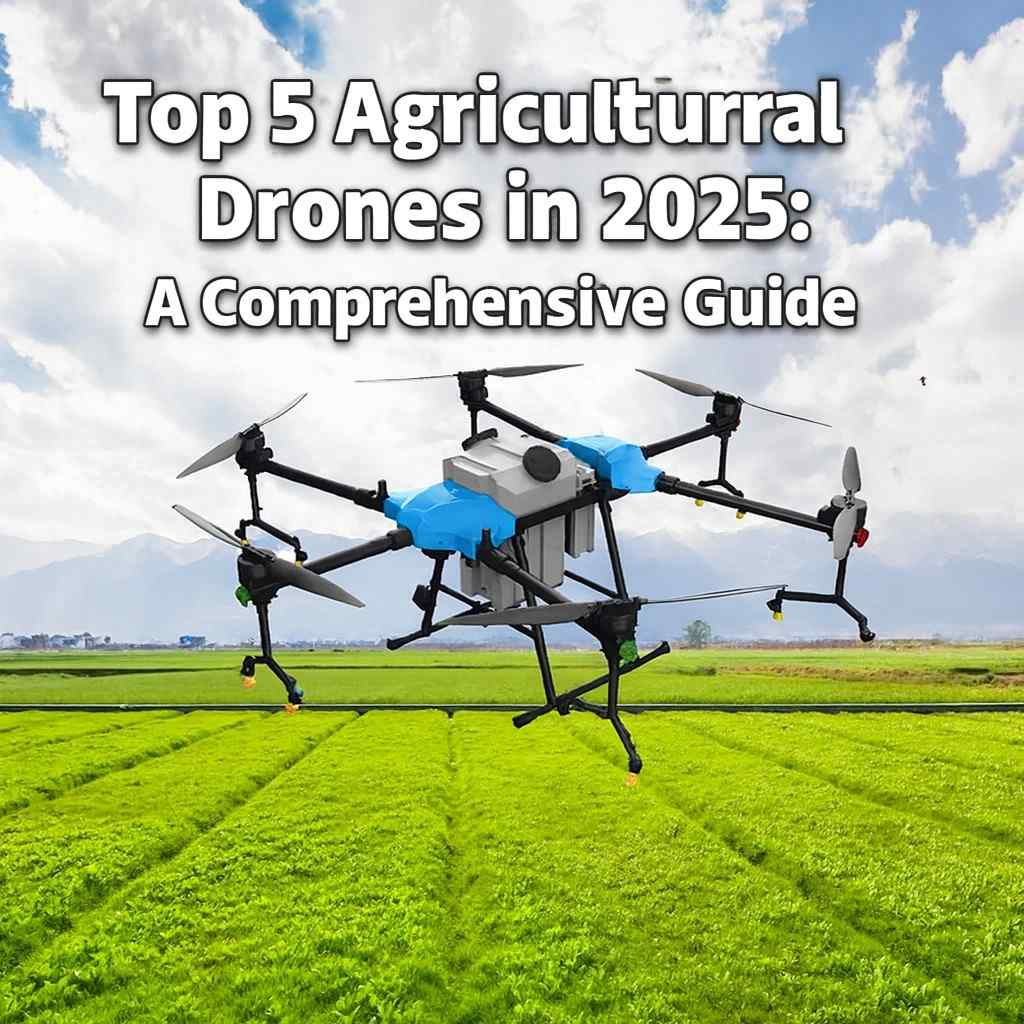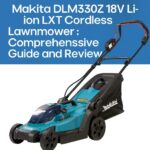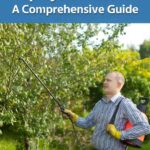Agricultural drones are transforming farming by enabling precision spraying, crop monitoring, and data-driven decisions that reduce costs, minimize chemical use, and enhance yields. In 2025, advancements in AI, GPS, and payload capacities make these tools essential for sustainable agriculture. This guide ranks the top 5 agricultural drones available for purchase, selected for their spraying capabilities and suitability for various farm sizes. Each drone is analyzed with technical specifications, practical applications, pros/cons, user considerations, and direct product links to online retailers. To enhance usability, we’ve included a Frequently Asked Questions (FAQ) section, curated educational video resources, and tips on maintenance and regulatory compliance. Prices are provided in ranges as of October 2025 and may vary based on sellers.
Selections prioritize drones with agricultural spraying features, focusing on models accessible through online retailers, as high-end units like DJI Agras (T50, T40) are typically sold through specialized channels. Data is sourced from product listings and user feedback to ensure relevance.
1. Heavy Lift 30KG Payload Remote Control Agricultural Drone for Crop Plant Spraying
This hexacopter-style drone is a top choice for heavy-duty spraying on mid-to-large farms. Its 30KG payload and anti-drift nozzles make it ideal for extensive crop protection in grains, vegetables, or orchards.
Technical Specifications
- Payload Capacity: 30KG liquid/granular; max takeoff weight 92KG.
- Spraying System: Anti-drift nozzles; 10L/min flow rate; 1mPa pump pressure.
- Navigation and Sensors: GPS for autonomous flight; basic terrain following.
- Flight Time: 20–25 min (empty); 8–10 min (loaded).
- Spray Width: 6–8 meters; efficiency 0.5 acres/min.
- Battery: 28,000mAh LiPo; 25–50 min charge; 300–500 cycles.
- Dimensions: Folded 1050×620×780mm; unfolded 2050×1800×780mm; weight 27.8KG (without battery).
- Power: 51.8V (14S); speed 3–10 m/min.
Practical Applications
This drone excels in fumigation and fertilizer spreading for row crops like corn or soybeans, covering 150–180 acres daily. Its adjustable speed and GPS suit sloped fields, reducing chemical runoff by up to 20%. User feedback highlights its durability for large-scale operations.
Pros
- High Payload: 30KG capacity minimizes refills, ideal for farms over 50 acres.
- Efficiency: Fast coverage with anti-drift tech saves chemicals and labor.
- Robust Build: Modular design for easy field repairs.
- Cost-Effective: Competitive pricing for heavy-lift capabilities.
Cons
- Short Flight Time: Requires multiple batteries for all-day use.
- Basic AI: No advanced obstacle avoidance; needs manual oversight.
- Heavy: Requires truck transport, less portable than smaller models.
User Considerations
Best for experienced farmers or contractors; beginners should pursue FAA Part 137 certification for commercial spraying. Extra batteries are recommended. Users note reliable performance but occasional GPS calibration issues.
Product Link: Heavy Lift 30KG Payload Agricultural Drone – Price range: $2,000–$3,000.
2. 30L Payload Pesticide Spraying Drone 6 Axis Agriculture Plant Sprayer
This 6-axis quadcopter is a versatile choice for liquid spraying, balancing power and portability. It’s tailored for mid-sized farms needing precise pesticide or herbicide application.
Technical Specifications
- Payload Capacity: 30L liquid; max takeoff 92KG.
- Spraying System: Centrifugal anti-drift nozzles; 10L/min flow.
- Navigation and Sensors: GPS/RTK; 6-axis stabilization.
- Flight Time: 20–25 min (unloaded); 8–10 min (loaded).
- Spray Width: 6–8 meters; 0.5 acres/min.
- Battery: 28,000mAh; 25–50 min charge; 300+ cycles.
- Dimensions: Folded 1050×620×780mm; weight 27.8KG.
- Power: 51.8V; speed 3–10 m/min.
Practical Applications
Ideal for orchards or vegetable farms, it supports autonomous routes for weed control or pest management, covering up to 180 acres daily. Its stability suits windy conditions, and it’s effective for organic farming transitions.
Pros
- Precision: 6-axis gyro ensures steady spraying, reducing drift.
- High Throughput: Large tank boosts productivity for 100+ acre farms.
- Portable: Foldable for easy transport between sites.
- Upgradable: Supports FPV camera add-ons.
Cons
- No Radar: Limited low-altitude canopy navigation.
- Noise: Louder motors may disturb nearby livestock.
- Seller Support: Warranty varies by retailer.
User Considerations
Semi-professional farmers should verify local pesticide regulations. Users suggest updating firmware for GPS reliability. Great for scaling up from manual sprayers.
Product Link: 30L Payload Pesticide Spraying Drone – Price range: $2,000–$2,500.
3. SWET Agricultural Drone Sprayer Payload 10kg 10L Intelligent Obstacle Avoidance
This compact, AI-enabled drone is ideal for smaller farms, offering obstacle avoidance and ease of use. It’s suited for beginners or hobbyists transitioning to professional spraying.
Technical Specifications
- Payload Capacity: 10KG/10L; max takeoff ~25KG.
- Spraying System: Adjustable nozzles; 4–6L/min flow.
- Navigation and Sensors: GPS with ultrasonic avoidance.
- Flight Time: 15–20 min (loaded).
- Spray Width: 4–6 meters; 0.2–0.3 acres/min.
- Battery: 16,000mAh; 30-min charge.
- Dimensions: Folded ~800×500×400mm; weight 12KG.
- Power: 22.2V (6S); wind resistance 8 m/s.
Practical Applications
Perfect for small plots (10–50 acres) like berry farms or greenhouses, its AI navigates tight spaces for targeted spraying. Variable rates optimize fertilizer use, reducing waste.
Pros
- Smart Avoidance: Prevents crashes, beginner-friendly.
- Portable: Lightweight for solo transport.
- Affordable: Competitive price for small farms.
- App Control: Real-time monitoring via smartphone.
Cons
- Small Tank: Frequent refills for larger areas.
- Range: ~500m transmission limits remote operation.
- Durability: Plastic parts may wear in rough conditions.
User Considerations
Requires FAA registration for commercial use; ideal for new farmers. Users recommend spare propellers for longevity.
Product Link: SWET 10L Agricultural Drone Sprayer – Price range: $800–$1,200.
4. Agricultural Crop Sprayer Drone – 10L Farm Drone for Crop Dusting
This budget-friendly quadcopter is designed for basic spraying, offering simplicity for smallholder farmers or backyard operations.
Technical Specifications
- Payload Capacity: 10L liquid.
- Spraying System: Centrifugal nozzles; 3–5L/min.
- Navigation and Sensors: GPS hold; manual control.
- Flight Time: 12–15 min (loaded).
- Spray Width: 3–5 meters.
- Battery: 11.1V; 20-min charge.
- Dimensions: ~700×400×300mm; weight 8KG.
- Power: 4S LiPo.
Practical Applications
Best for spot-treating weeds or pests in small fields like herb gardens or rice paddies. Its lightweight design allows quick deployment.
Pros
- Low Cost: Affordable entry into drone spraying.
- Ease of Use: Minimal setup for immediate use.
- Lightweight: Solo operation feasible.
Cons
- No Sensors: Manual piloting required.
- Short Flight: Limited to <10 acres.
- Basic Features: No route planning.
User Considerations
Great for hobbyists; upgrade for larger tasks. Users note battery constraints but value affordability.
Product Link: 10L Agricultural Crop Sprayer Drone – Price range: $400–$600.
5. Parrot Bluegrass Fields Agricultural Quadcopter
This premium quadcopter combines scouting with light spraying, featuring multispectral cameras for crop health analysis. It’s ideal for data-driven farming.
Technical Specifications
- Payload Capacity: 2–5L (spraying kit); 500g camera.
- Spraying System: Optional nozzles; 1–2L/min.
- Navigation and Sensors: GPS/RTK; multispectral imaging.
- Flight Time: 25 min.
- Spray Width: 2–4 meters.
- Battery: 5,000mAh; 45-min charge.
- Dimensions: 820×193×305mm; weight 2KG.
- Power: 11.1V.
Practical Applications
Excels in NDVI mapping and targeted spraying for vineyards or cereals, integrating with farm software for yield insights.
Pros
- Advanced Imaging: Multispectral cameras detect issues early.
- Autonomous: Pre-programmed flights for data collection.
- Compact: Backpack-friendly.
Cons
- Low Spray Capacity: Not for heavy tasks.
- Support: Mixed feedback on service.
- Price: High for light spraying.
User Considerations
Suits tech-focused farmers; users highlight imaging but note flight stability issues.
Product Link: Parrot Bluegrass Fields Quadcopter – Price range: $4,500–$5,500.
Frequently Asked Questions (FAQ)
Based on user queries from online forums and product feedback, here are answers to common questions about agricultural drones:
- Do I need a license to use these drones for spraying?
- In the U.S., commercial spraying requires FAA Part 137 certification. Hobbyist use needs FAA registration for drones over 250g. Check local regulations elsewhere.
- How do I maintain these drones?
- Clean nozzles post-use to prevent clogs, store batteries at 50% charge, and inspect propellers regularly. Retailers often include maintenance kits.
- Can these drones handle windy conditions?
- High-payload models resist winds up to 10 m/s; smaller ones like the SWET handle 8 m/s. Avoid flying in stronger gusts to prevent drift.
- Are these drones beginner-friendly?
- The SWET and 10L Crop Sprayer are easier due to simple controls or avoidance tech. Larger models require experience or training.
- What’s the ROI for agricultural drones?
- Drones reduce chemical use by 15–30% and labor costs, offering ROI within 1–2 seasons for farms over 20 acres, per user feedback.
- Can I upgrade these drones?
- The 30L Pesticide Drone supports FPV cameras; the Parrot Bluegrass integrates with analytics software. Check product listings for add-ons.
Educational Video Resources
To support farmers in learning drone operation, maintenance, and best practices, here are curated YouTube videos available as of October 2025. These focus on drones similar to those listed:
- “How to Operate an Agricultural Spraying Drone” (Drone U)
- Covers setup, calibration, and spraying for 10–30L drones.
- Search: “Drone U agricultural drone” on YouTube for the latest video.
- “Precision Agriculture with Drones” (Farm Progress)
- Explains multispectral imaging for crop health, like Parrot Bluegrass.
- Search: “Farm Progress drone agriculture” on YouTube.
- “DIY Drone Maintenance for Farmers” (AgriTech Channel)
- Guides nozzle cleaning, battery care, and GPS troubleshooting.
- Search: “AgriTech drone maintenance” on YouTube.
- “FAA Part 137 Certification Guide” (Pilot Institute)
- Details U.S. pesticide spraying regulations.
- Search: “Pilot Institute Part 137” on YouTube.
- “Beginner’s Guide to Drone Spraying” (PrecisionHawk)
- Focuses on small drones like the SWET or 10L Crop Sprayer.
- Search: “PrecisionHawk drone spraying” on YouTube.
Note: YouTube URLs are dynamic, so search the suggested terms or check product pages for manufacturer tutorials.
Additional Considerations
Maintenance Tips
- Nozzle Care: Rinse after use to prevent chemical buildup; replace every 200 hours.
- Battery Management: Store at 20–25°C, charge to 50% for storage, avoid full discharges.
- Propeller Checks: Inspect for cracks post-flight; retailers offer replacement kits.
- Software Updates: Update firmware via apps for improved GPS and stability.
Regulatory Guidance
- U.S. Compliance: Register drones over 250g with FAA; Part 137 certification needed for commercial spraying ($150–$300 training).
- Global Rules: EU requires EASA permits; verify local pesticide laws.
- Safety: Use low-drift nozzles to reduce runoff by 15–30%.
Future Trends
In 2025, drones feature affordable GPS, modular designs, and eco-friendly spraying. Future models may include AI for crop-specific dosing and longer battery life, per online discussions.
Conclusion
These drones cater to budgets ($400–$5,500) and farm sizes, from small plots (SWET, 10L Crop Sprayer) to larger fields (30KG, 30L Pesticide Drone) and data-driven operations (Parrot Bluegrass). FAQs and videos address user concerns, while maintenance and regulatory tips ensure success. Verify compliance, explore tutorials, and use product links for purchases or details.







